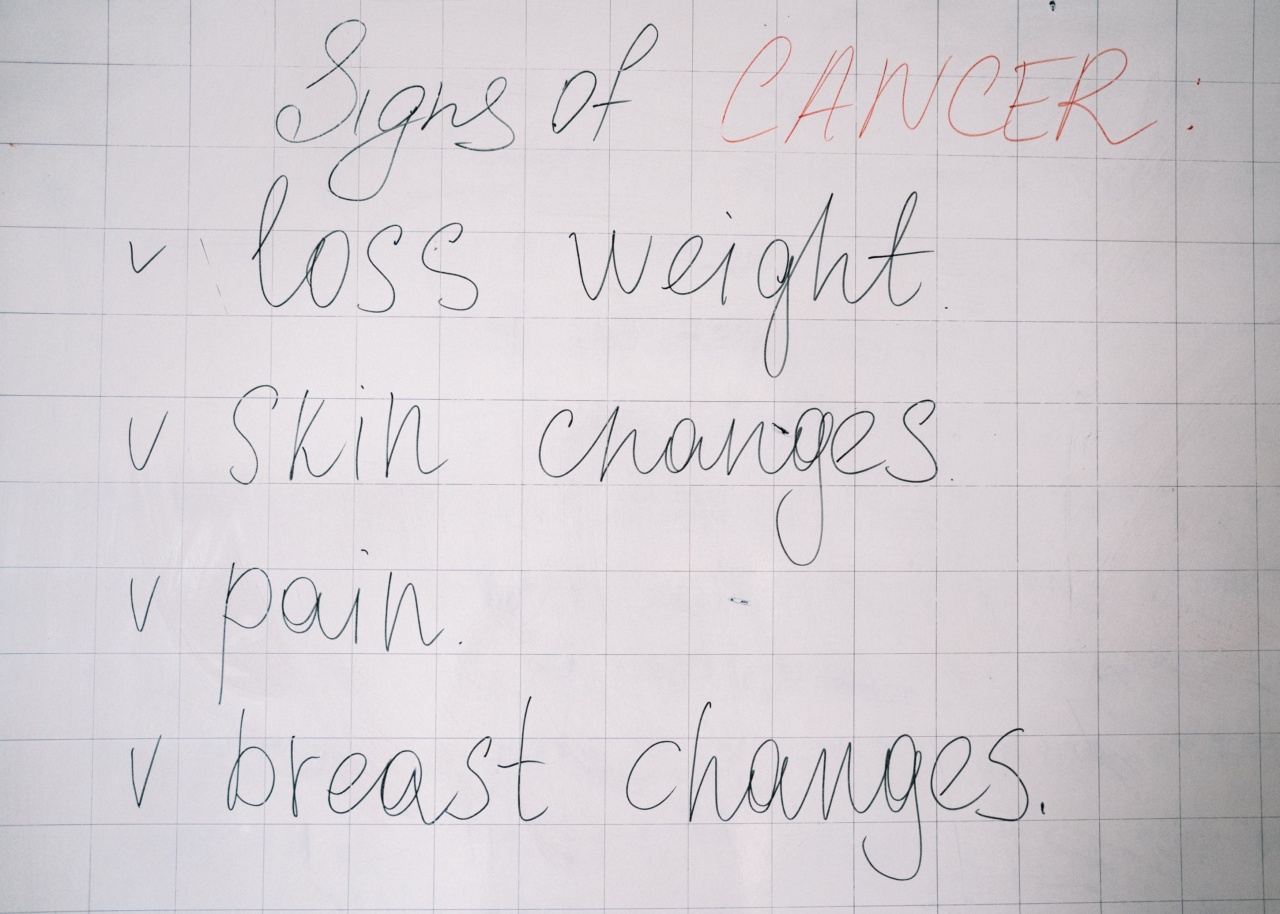Endoporical breast carcinoma refers to a malignant growth of the breast that arises beneath the nipple-areola complex. It is a rare form of breast cancer, accounting for only 1-2% of all breast cancer cases.
Endoporical breast carcinoma, unlike other forms of breast cancer, presents with unique clinical and histopathological features that require special attention and management.
Signs and Symptoms of Endoporical Breast Carcinoma
The signs and symptoms of endoporical breast carcinoma may vary depending on the stage of the disease and the individual’s overall health status. The following are some common signs and symptoms of endoporical breast carcinoma:.
Nipple Discharge
One of the most common clinical signs of endoporical breast carcinoma is nipple discharge. The discharge may be bloody, serous, or purulent. The discharge may also be spontaneous or expressed from the nipple.
The nipple may also appear retracted or inverted, with a palpable mass underneath it.
Changes in Breast Size or Shape
Endoporical breast carcinoma can cause changes in breast size or shape due to the formation of a mass or tumor beneath the nipple-areola complex. The breast may appear asymmetrical, with one breast appearing larger or smaller than the other.
The skin overlying the mass may also appear red, inflamed, or dimpled.
Breast Pain or Tenderness
Some women with endoporical breast carcinoma may experience breast pain or tenderness due to the pressure exerted by the mass or tumor on the surrounding breast tissue.
The pain or tenderness may be intermittent or continuous, and may be accompanied by other signs and symptoms such as nipple discharge and changes in breast size or shape.
Breast Lump
A breast lump in the area of the nipple-areola complex is a common clinical sign of endoporical breast carcinoma. The lump may be firm or hard, and may be fixed or movable on palpation.
The lump may also be visible on mammography or ultrasound, and may be associated with microcalcifications.
Nipple Retraction or Inversion
Nipple retraction or inversion is a common sign of endoporical breast carcinoma due to the formation of a mass or tumor beneath the nipple-areola complex.
The nipple appears to be pulled inward or flattened, and may be accompanied by other clinical signs such as nipple discharge or changes in breast size or shape.
Breast Skin Changes
Endoporical breast carcinoma can cause changes in the appearance of the breast skin due to the pressure exerted by the mass or tumor on the surrounding tissue.
The skin may appear red, inflamed, or dimpled, and may be accompanied by other clinical signs such as nipple discharge or changes in breast size or shape.
Breast Ulceration
In advanced stages of endoporical breast carcinoma, the mass or tumor may cause destruction of the overlying skin, resulting in breast ulceration. The ulcer may be painful or tender, and may discharge pus or blood.
The ulcer may also be associated with foul odor and fever.
Lymph Node Enlargement
Endoporical breast carcinoma may cause enlargement of the axillary lymph nodes due to the spread of cancer cells from the breast to the lymph nodes. The lymph nodes may be firm or hard, and may be fixed or movable on palpation.
The lymph nodes may also be associated with pain or tenderness.
Unexplained Weight Loss or Fatigue
Some women with endoporical breast carcinoma may experience unexplained weight loss or fatigue due to the body’s response to cancer cells.
The weight loss may be gradual or rapid, and may be accompanied by other clinical signs such as loss of appetite and weakness.
Bone Pain or Fractures
Endoporical breast carcinoma may spread to the bones, causing bone pain or fractures. The pain may be intermittent or continuous, and may be accompanied by other clinical signs such as swelling and tenderness.
The fractures may occur spontaneously or due to minor trauma.
Conclusion
Endoporical breast carcinoma is a rare form of breast cancer that requires special attention and management.
Women who present with signs and symptoms of endoporical breast carcinoma should seek medical attention promptly for appropriate evaluation and treatment. The signs and symptoms of endoporical breast carcinoma may vary depending on the stage of the disease and the individual’s overall health status.
It is important for women to be aware of these signs and symptoms, and to report any changes in their breast health to their healthcare provider.





















